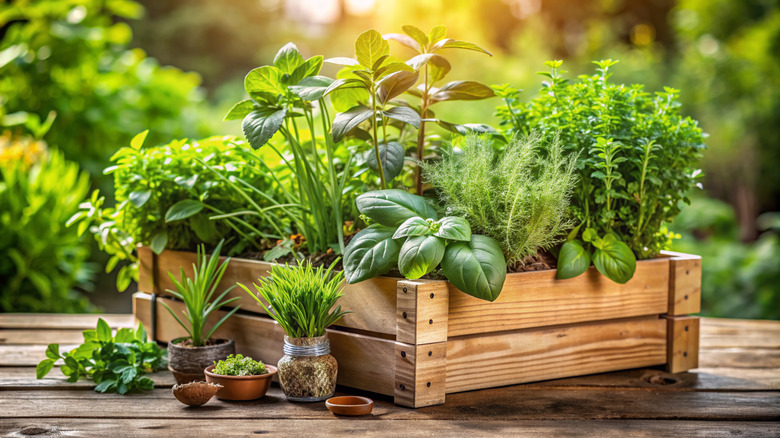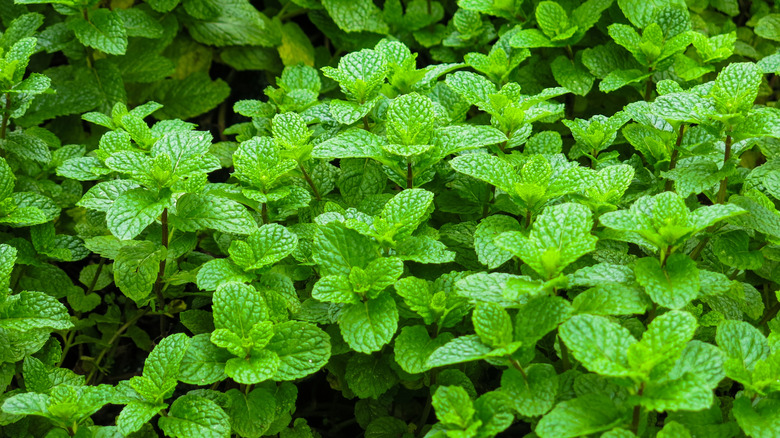The Fresh Herb That's Perfect For Beginner Gardeners To Grow
When you're ready to get your hands in the dirt and start cultivating your own kitchen staples, there's no better place to start than with herbs. Hardy and cheap, many can be grown indoors or outdoors, and there's no plant that thrives in all conditions quite like mint.
Mint's high metabolism means it processes water and nutrients quickly — and while it thrives in full sun conditions, it also does quite well in partial shade. It's a hardy perennial that grows back each year and, like marigolds, attracts pollinators and predatory bugs that kill pests. Like Martha Stewart's suggestion for the easiest veggie to grow, lettuce, it's forgiving if you forget to water it and is able to quickly bounce back with a little tender love and care. If you live in an area with frequent rainfall, that's often all it needs to thrive, but it also does well in hot, dry areas with some extra watering.
However, there's one extremely important thing to keep in mind when growing mint in your garden: It spreads like wildfire. Mint plants grow through rhizomes, meaning their roots spread through the surrounding area and sprout new plants. Planting it directly in your garden can cause major problems, competing with and choking out your other plants. For best results, keep mint confined to raised beds away from your other plants or, better yet, confine it to a pot.
How to use, harvest, and store fresh mint
Once your mint has reached sufficient size and can tolerate losing a few leaves, it's time for the best part of any gardening hobby: harvesting! Mint reaches its peak flavor just before it blooms, when the leaves are large, dark, and full of tasty oils. These leaves are perfect for blanched mint syrup, a powerful concoction that infuses tons of flavor into drinks with only a couple of drops.
Although you may only need a couple of leaves, the best way to harvest and store mint is to snip away whole sprigs of mint with sharp scissors or a knife to avoid tearing the stems and exposing the plant to disease or harm. Cutting the stem a couple of inches above the soil line and leaving a few leaves maintains optimum conditions for the plant. Failing to harvest mint this way won't kill it, but you want to maintain optimum conditions to get the most from each plant.
You can keep mint sprigs fresh by leaving them in a half-filled glass of water, keeping the plant hydrated until you're ready to use it. Air drying in an airy, dry part of your home works perfectly fine, but you can speed up the process by putting them in an oven set to 105 degrees Fahrenheit for a few hours until the leaves become crisp and crumbly. After that, just blitz them in a food processor or blender until they achieve your desired texture and store them in an airtight container or zip-top bag.


